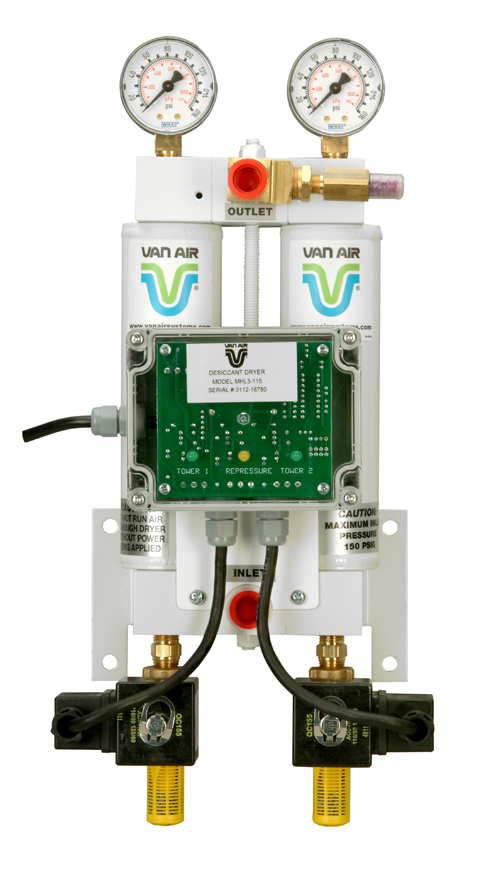Principle of Operation, Heatless Desiccant Air Dryers
Posted by Tyler on 01 10 2017
Heatless compressed air dryers (often called desiccant dryers) comprise two columns of adsorbent media, control valves, and a control panel.These are well established devices for delivering high purity compressed air in process applications, laboratories, and air systems exposed to low operating temperatures.
The drying process is simple.Compressed air laden with water vapor flows upward through the adsorbent media.Water molecules adhere (adsorb) to the porous surface of the media in one column.At the outlet of this column residual water content is lowered to a pressure dew point of -40⁰ F or below.A portion of this dry outlet air is redirected downward through the alternate column, whose pressure has been lowered to 0 PSIG.This dry purge or sweep air desorbs water molecules from the surface of the media in that column, regenerating it for service.The purge air volume typically represents 15 to 18 percent of the air dryers rated capacity.This process is known as pressure swing adsorption (PSA).
A complete cycle in a PSA heatless dryer is commonly 10 minutes.Small capacity point-of-use PSA air dryers often use a more rapid time cycle.
We offer a complete range of heatless desiccant air dryers with flow capacities of three to several thousand SCFM.Browse our catalog of desiccant air dryers by clicking here.
We encourage you to contact us to discuss your air drying application.

Heatless Dryer Model MHL-6 (6 SCFM @ 100 PSIG), Van Air Systems

